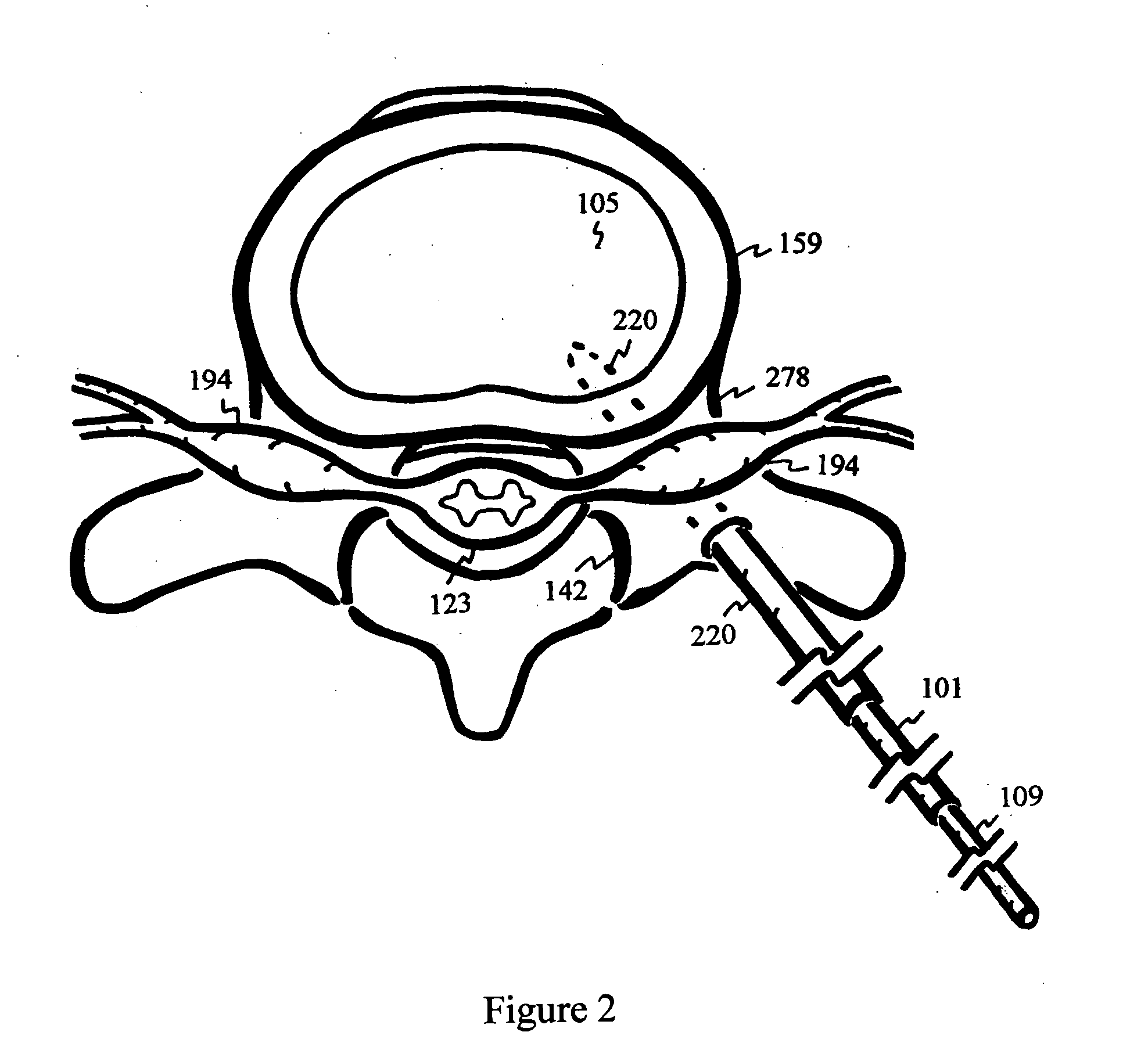Disc shunt for treating back pain
a disc shunt and back pain technology, applied in the field of disc shunt for treating back pain, can solve the problems of reducing the production of lactic acid in the anaerobic environment with the presence of lactic acid, and achieve the effect of preventing excessive plugging
- Summary
- Abstract
- Description
- Claims
- Application Information
AI Technical Summary
Benefits of technology
Problems solved by technology
Method used
Image
Examples
Embodiment Construction
[0142] Pedicle 278 puncturing with a trocar can be guided by a fluoroscope, ultrasound or MRI. The trocar can also be coated with radiopaque, echogenic or magnetic coating to intensify the image. A tubular dilator is inserted over the trocar. The trocar is then replaced with a drill, which drills into the pedicle 278 toward the center of the vertebral body 159.
[0143] The drill is replaced with a conduit 126 delivery device. The delivery device contains a conduit 126 abutted against a plunger 109 within an elastically curved needle 101. The elastically curved needle 101 is resiliently straightened within a rigid needle 220. FIG. 1 shows insertion of the conduit 126 delivery device through the dilator, not shown, into the pedicle 278. The pedicle 278 puncturing circumvents the iliac blockage and prevents potential injury to the nerve 194, as shown in FIG. 2. FIG. 3 shows a side view of a pedicle 278 puncture into the vertebral body 159 with the rigid needle 220 containing the elastic...
PUM
 Login to View More
Login to View More Abstract
Description
Claims
Application Information
 Login to View More
Login to View More - R&D
- Intellectual Property
- Life Sciences
- Materials
- Tech Scout
- Unparalleled Data Quality
- Higher Quality Content
- 60% Fewer Hallucinations
Browse by: Latest US Patents, China's latest patents, Technical Efficacy Thesaurus, Application Domain, Technology Topic, Popular Technical Reports.
© 2025 PatSnap. All rights reserved.Legal|Privacy policy|Modern Slavery Act Transparency Statement|Sitemap|About US| Contact US: help@patsnap.com



